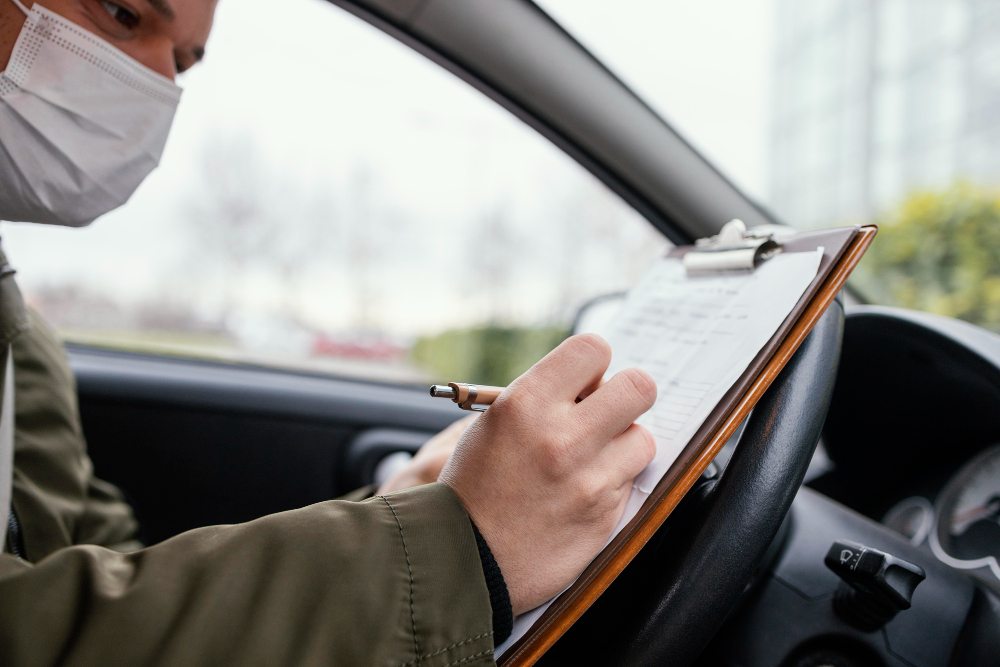It might be tricky for you if you are a novice and want to learn to drive a manual car. However, having a guide can surely help you move with your learning. The blog below discusses some helpful guidelines for driving a manual car.
Before you delve into the details of driving a manual car, let’s learn some details of a few important car components directly linked with driving:
Accelerator: It is located on the extreme right under your feet and functions to power the engine for gaining speed.
Brake: The brake lies to the left of the accelerator. Do not confuse this brake with the parking brake that stops your car from sliding when it is in a neutral position.
Clutch: The clutch is located on the extreme left under your feet. When the clutch is released, it develops a connection between the engine and the transmission, enabling the vehicle to move.

Before Starting Your Car
Now, before you start driving your car:
- Ensure that the doors are properly closed, you’ve fastened your seatbelt properly, and your seat is adjusted properly so you can drive comfortably.
- Keep the windows a little open as it helps you hear engine sound at the time of starting.
- Make sure to keep the gear in neutral. Check its position by moving it in the right or left direction. If it feels springy, it would be neutral.
How to Start the Car?
The starting procedure of the car varies between a keyless car and a car with a key.
- To start a keyless car, hold the clutch and press the start button.
- For a car with a key, insert it in the keyhole on the right side of the steering and normally turn it with one click. This turning will switch on the dashboard warning lights. Remember, it’s not the ignition point.
- Now, fully hold the clutch and rotate the key clockwise to start the engine.
- Now, let go of the key and the clutch.
How to Move Off the Car?
Once you have assured preliminary preparations, it’s time to move off the car:
- Place your feet on the clutch to press it down and shift the gearstick from the neutral to the first gear.
- Now, release the clutch pedal and slowly press the accelerator with your right foot. Do not press the accelerator too forcefully.
Ensure it’s Safe to Move off.
Before moving off, briefly scan your surroundings and ensure it’s safe to move off. Check your side mirrors and blind spot over your shoulder. Once you feel everything is ok, simply release the parking brake.
Slightly pull the parking brake and press the button simultaneously. Now lower the brake down and let the button go. With all these steps performed duly, you can move off safely and smoothly.
In the other case, if you do not find it safe to move off, release the gas pedal, press the clutch, and wait for your time to move off safely.

Shifting the Gear
- Once you are going speedily, you will feel that it’s time to shift into second gear. You will feel a noisy increase in the engine’s sound or see your RPM gauge as an indicator to shift the gear.
- Take away your right foot from the accelerator and press the clutch using your left foot simultaneously. Now, shift into the second gear. Now reverse your foot position, taking your left foot off the clutch and press the accelerator with the right foot. Your car will catch more speed. The same procedure will also shift other gears.
How to Decelerate Your Car?
Decelerating your car follows the same procedure as accelerating your car but in the reverse manner. To shift down the gear, say from 3 to 1, depress the clutch and release the accelerator; meanwhile, shift the gear.
How to Stop the Car?
To completely stop your car, shift down to the first gear. Now, move your feet on the brake and press it down normally. As you keep slowing down your car, press the clutch and shift the gear to neutral to prevent stalling the car.
Going in the Reverse
When you need to reverse the car, shift the gear into the reverse and let out the clutch. Keep your one foot on the break to control the reverse movement.
Parking
Manual cars do not have a “Park” gear, unlike automatic cars. So, in order to park these cars, you put the car into first gear. This amplifies the effect of the emergency brake and hinders the car from rolling.
Moving on a Steep Hill
Generally, you should avoid steep hills if you’re a beginner. However, rely on your parking brake to drive towards a height. Let off the clutch and accelerate your car. If you feel resistance in moving, release the brake, utilise the clutch and move forward with more acceleration.
Conclusion
Driving a manual car can be challenging; however, with the proper guidance and following the safety rules, you can learn to drive a manual car smoothly and safely.
Exel Driving School is a reputable institution for learning manual or automatic car driving. We have experienced and licensed professionals who teach you driving with personalised attention. Giving out their maximum, our instructors bring the best and most responsible drivers on the road. Contact us and be on your road map to become a skilful driver.

